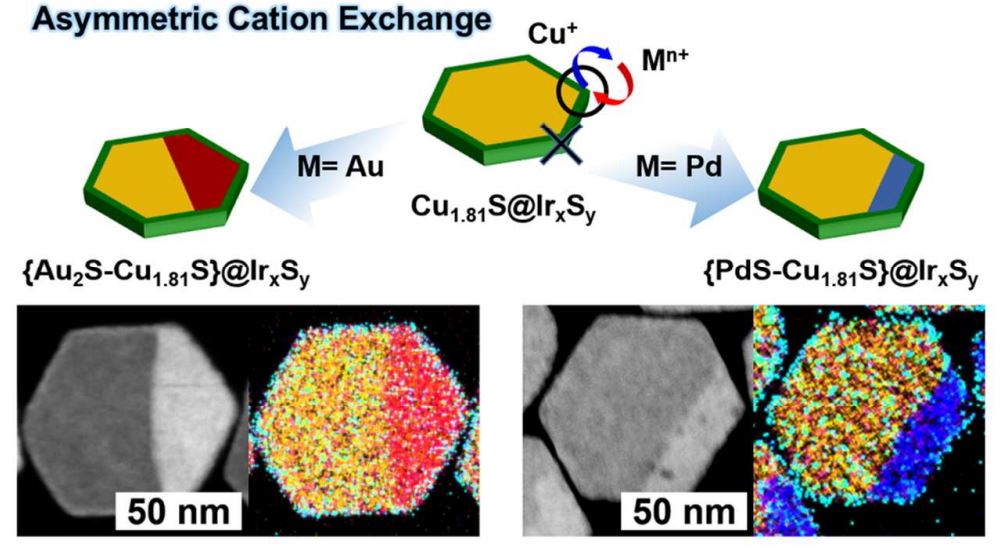
Post-synthetic transformation of nanoparticles has received great attention, because this approach can provide an unusual route to elaborately composition-controlled nanostructures while maintaining the overall structure of the template. In principle, anisotropic hetero-nanoparticles of semiconductor materials can be synthesized via localized, i.e., single site, cation exchange in symmetric nanoparticles. However, the differentiation of multiple identical cation exchange sites in symmetric nanoparticles can be difficult to achieve, especially for semiconductor systems with very fast cation exchange kinetics. We posited that single-site cation exchange in semiconductor nanoparticles might be realized by imposing a significant kinetic hurdle to the cation exchange reaction. The different atomic arrangements of the core and crown in core-crown structures might further differentiate the surface energies of originally identical cation exchange sites, leading to different reactivities of these sites. The first cation exchange site would be highly reactive due to the presence of a formed interface, thereby continuing to act as a site for cation exchange propagation. Herein, we present the proof-of-concept synthesis of Janus nanoparticles by using edge-protected Cu1.81S@IrxSy hexagonal nanoplates. The Janus nanoparticles comprising {Au2S-Cu1.81S}@IrxSy or {PdS-Cu1.81S}@IrxSy exhibited dissimilar structural motifs due to the disparate cation exchange directions. This synthetic methodology exploiting cation exchange of surface-passivated semiconductor nanoparticles could fabricate the numerous symmetry-controlled Janus heterostructures.

https://pubs.acs.org/doi/10.1021/acsnano.8b02752
 Overcoming Drug Resistance by Targeting Cancer Bioenergetics ...
Overcoming Drug Resistance by Targeting Cancer Bioenergetics ...
 Deconvolution of Tunneling Current in Large-area Junctions Fo...
Deconvolution of Tunneling Current in Large-area Junctions Fo...

















